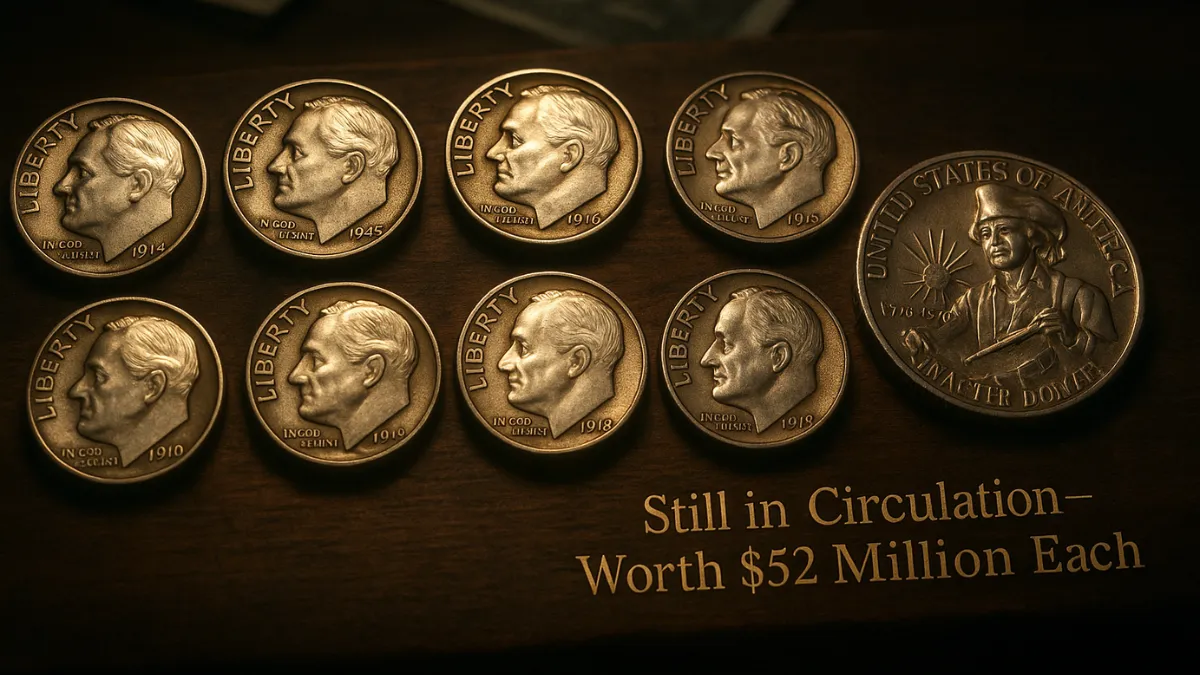Eight Rare Dimes and a Bicentennial Quarter That Could Be Worth $52 Million Each
Have you ever thought that the coins sitting in your wallet or piggy bank might actually be worth millions? Some rare U.S. dimes and a unique Bicentennial quarter have reportedly reached values as high as $52 million due to their extreme rarity, minting mistakes, and historical background. This guide will help you understand how to spot these valuable coins and where they might turn up.
Overview of High-Value Coins
| Feature | Details |
|---|---|
| Top Valued Coins | Rare Bicentennial quarter and eight collectible dimes that could be worth up to $52 million each |
| Key Identifiers | Unusual mint marks, production errors, and limited mintage |
| Helpful Tips | Review dates, inspect mint marks, assess condition; consult coin professionals |
| Trusted Resources | U.S. Mint, PCGS, NGC, numismatic organizations |
| Search Methods | Coin rolls, estate sales, antique stores, and online platforms |
Why These Coins Are So Valuable
The high worth of these coins is based on three main elements: scarcity, condition, and historical relevance. Coins that had limited production or few surviving examples are considered highly collectible. If the coin is well-preserved or includes a minting error, its value increases.
Notable examples include the 1894-S Barber Dime, of which only 24 were ever made, with just 9 still known today; the 1916-D Mercury Dime, which had a small mintage and is rarely found in top-grade condition; and special variants of the Bicentennial quarter, which can command enormous sums when uncirculated or flawed. These coins each reflect a unique piece of U.S. history and minting practices.
How to Identify Valuable Coins
You don’t need to be an expert to begin recognizing rare coins. Here are a few ways you can start:
- Check the Date and Mint Mark
Focus on coins that have uncommon years or specific mint marks. For example, the 1916-D Mercury Dime carries a “D” that indicates its origin from the Denver Mint—a key detail collectors look for. A coin guide like The Red Book is very helpful in learning what to look for. - Look for Minting Errors
Mistakes during production, like double images (double dies), off-center stamping, or partial blanks (clipped planchets), can make a coin extremely desirable. The 1955 Lincoln cent with a double die obverse, for example, once sold for more than $100,000. - Evaluate the Condition
Coins are graded on a 1 to 70 scale, where higher numbers represent better preservation. A magnifying glass can help you spot wear, scratches, and other details. Coins closer to a grade of 70 are usually more valuable. - Get a Professional Opinion
If you think you’ve found a rare piece, getting it authenticated and graded by experts like PCGS or NGC can give you an accurate assessment of its value.
Best Places to Look for Rare Coins
Searching for valuable coins can feel like hunting for buried treasure. Here are some of the best ways to start:
- Coin Roll Hunting
Visit your local bank and request rolls of coins. By sorting through them, you may come across a rare or old coin that others have overlooked. - Estate Sales & Auctions
Many older coin collections appear in estate sales without much notice. These events can be a goldmine for collectors who know what to look for. - Antique Shops & Flea Markets
These locations often have coins sold at bargain prices. The sellers might not be aware of their true value. Building a good rapport with store owners can also lead to great finds. - Online Marketplaces
Websites like eBay or heritage auction platforms list coins from across the country. However, always verify the coin’s authenticity before making a purchase.
Famous Rare Coins and Estimated Values
1894-S Barber Dime – Estimated to be worth more than $2 million; fewer than 10 exist today.
1916-D Mercury Dime – Can be valued over $200,000, especially when well-preserved.
Bicentennial Quarter (Error Variants) – Some extremely rare versions are believed to reach up to $52 million in value due to their rarity and unique features.
FAQs
What makes the 1894-S Barber Dime so valuable?
Its value comes from the fact that only 24 were originally minted, and fewer than 10 are known to still exist today.
How can I tell if my Bicentennial quarter is rare?
Look for indicators like uncirculated quality, minting mistakes, or odd features that differ from standard quarters.
Where should I get my coin appraised?
Consider using trusted services such as PCGS or NGC, which specialize in professional coin grading and authentication.
Can I still find valuable coins in everyday circulation?
Yes, valuable coins sometimes show up in regular change. Sorting through coins or coin roll hunting can uncover hidden gems.
Susan is a seasoned finance writer with a knack for breaking down complex money topics into clear, actionable advice. With years of experience in personal finance, investing, and market trends, she empowers readers to make smarter financial decisions. Her work has been featured in leading finance blogs and publications, where she combines sharp analysis with relatable storytelling. Whether it’s budgeting, wealth-building, or decoding the latest economic shifts, Susan’s mission is to help people take control of their financial future with confidence.
